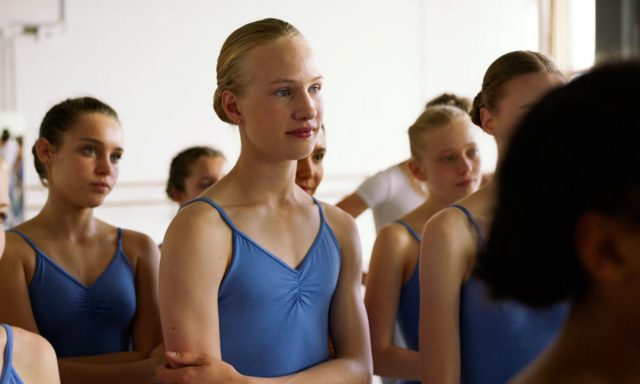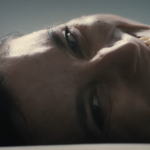Girl: Doesn’t Get It, by David Bax

It’s kind of beside the point whether or not Victor Polster is good in the lead role of Lukas Dhont’s Girl. In fact, in this case, a good performance may not even be ontologically possible. The transgender community has not been unclear about the casting of cisgender actors in transgender roles. The message has been sent and, by now, the practice is, frankly, unacceptable. So, from the jump, I was curious how, if I liked it, I would defend a movie that was so drastically wrongheaded before it even began. That, it turns out, was not to be a problem I was going to have.
Lara (Polster) is a fifteen-year-old girl and a very talented ballet dancer who lives with her father (Arieh Worthalter) and her younger brother (Oliver Bodart). She is taking medications in preparation for gender affirming surgery but, as the weeks and months go on and as she becomes deeper and deepter entrenched in–yet alienated from–her ballet troupe, she becomes increasingly uncomfortable with her body and eager to undergo her operations.
In the early going, Girl is rewarding in its observant patience. Long, immersive scenes of domestic life, school or ballet practice go by with little differentiation between events that relate to the plot or character arc and those that don’t. The result is effective and immersive, making moments like the one in which Lara’s teacher asks all the other girls in the class whether they’ll be comfortable changing in the locker room with her all the more sympathetically jarring.
At least Lara has a supportive family and therapist, the latter of whom instructs the cisgender audience to whom Girl is clearly aimed in the particulars of dysphoria. But Lara’s father’s reassuring words (“You are a woman so you have a woman’s body”) is an early sign of Dhont and co-writer Angelo Tijssens’ troubling preoccupation with physicality in general and genitalia in particular.
Even as Dhont shows such superficial sensitivity to the ways in which the smallest turns of language can do harm, he seems blind to the ways in which the things he leaves unsaid but shows in pictures worth thousands of words are insulting, reductive and demeaning. On the one hand, we are meant to bristle when a character uses the word “girls” to refer the other female dancers and, pointedly, not Lara. On the other hand, Dhont’s camera is constantly doing the exact same thing.
So many shots linger on the hips, posteriors and chests of Lara’s fellow ballerinas that the movie becomes mean-spirited. At a certain point, it’s impossible to differentiate between the cruelty of other characters and the cruelty of Girl itself. This preoccupation with the traditional physical signifiers of gender is not only hurtful, it’s a lie. Are we supposed to forget that plenty of cisgender girls also have flat backsides? Or are we supposed to surmise that they too are somehow less female, as Dhont seems to be suggesting Lara is (or will be until her surgery)? If there’s anything the increased visibility of transgender people in our culture has imparted above all, it’s that gender is about more than genitalia. Girl, for all its pretensions toward allyship, regressively insists in the opposite direction.





























I fully agree with your comments. This was a violent, degrading, leering film that was more interested in what was between Lara’s legs than what was between her ears. I hope that people will increasingly recognize this film as such and look elsewhere for positive and realistic representations of trans lives.